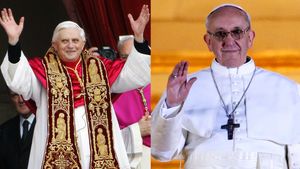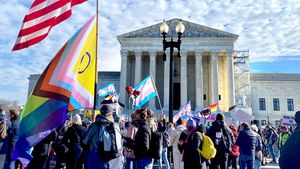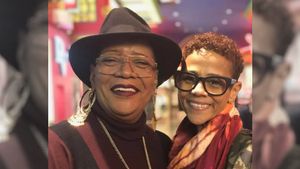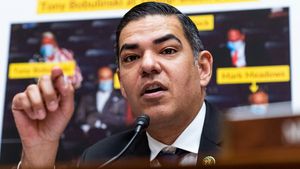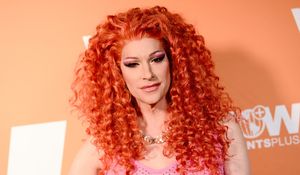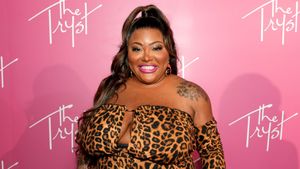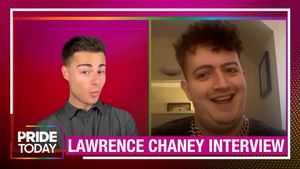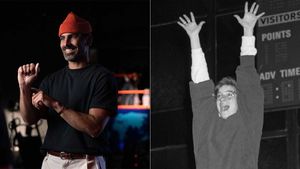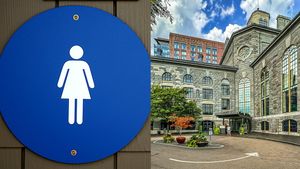(CNN) — Millions of student loan borrowers could see up to $20,000 of their debt canceleddepending on the outcome of Tuesday's US Supreme Court hearing on President Joe Biden's student loan forgiveness program.
How and when the justices rule will also determine when payments on federal student loans will resume after a pandemic-related pause that has been in place for nearly three years.
The Biden administration has said that payments will resume 60 days after litigation over the forgiveness program is resolved or at the end of August, whichever comes first.
Biden announced the targeted student loan forgiveness program last August, but the implementation was put on hold by lower courts before any debt forgiveness was granted.
The justices will hear arguments in two cases Tuesday concerning the program, which is estimated to cost $400 billion.
One case was brought by six Republican-led states that say they would be harmed financially if the forgiveness program goes into effect. The other case was brought by two borrowers in Texas who don't fully qualify for debt forgiveness under the program.
Plaintiffs in both lawsuits argue that the administration does not have the authority to cancel the student loan debt under the proposed rules of the program. But the Biden administration argues that a 2003 law grants the executive branch the power to discharge federal student loan debt in the event of a national emergency, including the Covid-19 pandemic.
There are about 43 million borrowers with federal student loans. Here's what they need to know.
When will borrowers know if they'll get loan forgiveness?
It's unclear exactly when the Supreme Court will issue its decision, but typically the justices release their rulings by the end of the current term, which is usually in late June or early July.
If the Supreme Court rules that the Biden administration's student loan forgiveness program is legal and allows it to move forward -- or if the court dismisses the challenges due to a lack of "standing," or the legal right to bring the disputes in the first place -- it's possible the government will begin issuing some debt cancellations fairly quickly.
The White House has said that it received 26 million applications before a lower court in Texas put a nationwide block on the program in November, and that 16 million of those applications have been approved for relief.
There could be room for further legal challenges to be filed even after the Supreme Court has ruled.
Who may be eligible for student loan forgiveness?
If Biden's program is allowed to move forward, individual borrowers who earned less than $125,000 in either 2020 or 2021 and married couples or heads of households who made less than $250,000 annually in those years could see up to $10,000 of their federal student loan debt forgiven.
If a qualifying borrower also received a federal Pell grant while enrolled in college, the individual is eligible for up to $20,000 of debt forgiveness. Pell grants are a key federal aid program that help students from the lowest-income families pay for college.
Federal Direct Loans, including subsidized loans, unsubsidized loans, parent PLUS loans and graduate PLUS loans, would be eligible for the program.
But federal student loans that are guaranteed by the government but held by private lenders, such as some Federal Family Education Loans, are not eligible unless the borrower applied to consolidate those loans into a Direct Loan before September 29, 2022.
What happens if the program is struck down?
If the Supreme Court strikes down Biden's student loan forgiveness program, it could be possible for the administration to make some modifications to the policy and try again — though that process could take months.
"The ball goes back to the Biden administration," said Luke Herrine, an assistant law professor at the University of Alabama who previously worked on a legal strategy for student debt cancellation.
"The administration could implement some other version of this installation under a different legal authority, but that may well generate its own litigation and we end up in the same place," Herrine added.
The Biden administration is also working on changes to existing federal student loan repayment plans that aim to make it easier for borrowers to pay for college. These changes are not facing legal challenges.
The Department of Education is currently finalizing a new income-driven repayment plan to lower monthly payments as well as the total amount borrowers pay back over time. In contrast to the one-time student loan cancellation program, the new repayment plan could help both current and future borrowers.
Additionally, in July, changes will be made the Public Service Loan Forgiveness program, which allows certain government and nonprofit employees to seek federal student loan forgiveness after making 10 years of qualifying payments. The changes will make it easier for some borrowers to receive debt forgiveness.
What are the legal arguments at play?
The key legal question in the cases before the Supreme Court Tuesday is whether the Higher Education Relief Opportunities for Students Act of 2003, known as the HEROES Act, grants the executive branch an emergency power to implement Biden's student loan forgiveness program.
The HEROES Act, which was passed in the wake of the September 11, 2001, terrorist attacks, grants the secretary of education the power to "waiveor modify" a federal student loan program in order to ensure that individuals "are not placed in a worse position financially" because of "a war or other military operation or national emergency."
Lawyers for the Biden administration argue that this provision gives the secretary of education the authority to cancel federal student loan debt so that borrowers are not made worse off with respect to their loans by the effects of the Covid-19 pandemic.
They cite data that shows borrowers who previously had their payments paused due to an emergency like a hurricane were at a higher risk of default after the pause expired.
But plaintiffs argue the Biden administration is abusing its power and using the pandemic as a pretext for fulfilling the president's campaign pledge to cancel student debt.
Even before ruling on the merits of the cases, the justices must consider whether the suing parties have standing to bring the legal challenges. This means that the parties must show that they have the legal injury necessary to be able to bring the challenge.
Last year, a district court found that the states did not have standing to sue. The states appealed to the 8th US Circuit Court of Appeals, which granted their request for a preliminary injunction.
If the justices decide that none of the parties have standing, the cases will be dismissed and Biden's program will be allowed to move forward.
The-CNN-Wire
™ & © 2023 Cable News Network, Inc., a Warner Bros. Discovery Company. All rights reserved.
- The Future of Student Loan Forgiveness in 2023 ›
- The Supreme Court Student Loan Case Is Bigger Than Just Student Debt ›









